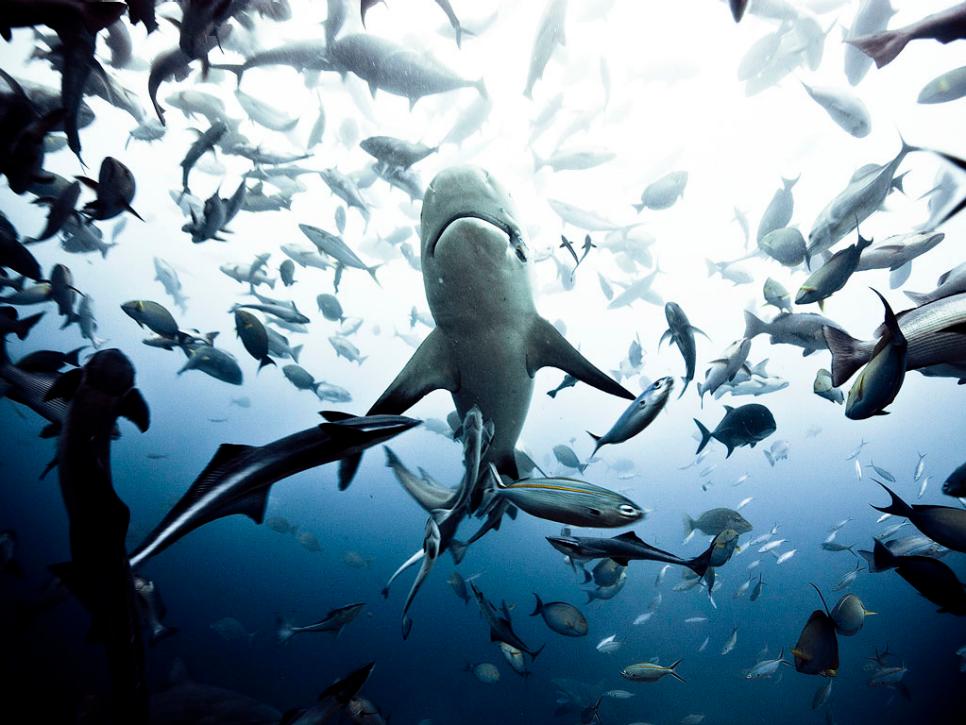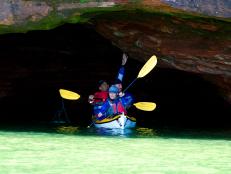Shark Shoot: Fiji
Photographer Mike Muller and his crew travel to the Beqa Lagoon in Fiji to capture photos of 8 different shark species. Mike sets out to shatter all of our preconceptions about the elusive creature.
Related To:
Shark shoot
Rather than shooting images of the animals at the surface like most photographers do, Mike and his crew decide to shoot them in their natural hunting grounds … more than 60 feet below the ocean's surface.
Shark shoot
Mike and his team take Hollywood studio-style lighting equipment 60 feet underwater to photograph the powerful creatures. In all, 3,600 watts of electricity are pumped through waterproof cables that Mike and his crew dive with. The guys must be extremely careful not to get tangled in the cords -- cutting yourself out of them would mean electrocution.
Lemon shark
A lemon shark. It might look menacing, but since 1580 there have only been 22 recorded lemon shark attacks, and none of them were fatal.
Shark shoot
Mike Muller gets up-close and personal with the ocean’s most feared creatures.
Bull shark
Bull sharks have the highest testosterone level of any animal on the planet, and can survive in fresh water. They have been seen swimming up the Amazon River and leaping up river rapids in Nicaragua, attempting to reach Lake Nicaragua.
Bull sharks
On a single dive, Mike and his crew encountered upwards of 30 bull sharks.
Bull shark
Along with great whites and tiger sharks, bull sharks are considered some of the most dangerous sharks to humans. Bull sharks are often found in shallow, warm waters … the same waters that beachgoers swim in.
Shark shoot
The plastic housing to keep Mike’s camera from getting wet at 60 feet below the water’s surface cost upwards of $12,000. Mike got so close to the sharks that one swam right into his lens.
Lemon shark
A lemon shark, 1 of the 8 shark species that Mike photographed in the Beqa Lagoon. He also got photos of the whitetip, tawny nurse, silvertip, grey reef, blacktip, bull and tiger sharks.
Mike shoots a tiger shark
On his last day in Fiji, Mike goes for a quick dive and finally spots a tiger shark.
Tiger shark
Tiger sharks are nicknamed the "wastebaskets of the sea," because they eat anything and everything. Stingrays, seals, birds and even license plates have been found in the stomachs of captured tiger sharks. While tiger sharks are the second most likely species (after great whites) to attack humans, they are unlikely to swim away after one bite.
Shark shoot
At the end of his Fiji trip, Mike concludes that the real underwater risk is scuba diving (because of the unreliability of oxygen tanks), not the sharks. They might look menacing, but none of them bothered Mike or his crew during the photo shoots … even when the crew was flashing strobe lights in their faces.







